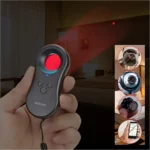Intruder Alarm Systems
Intruder alarm systems have become an indispensable part of home security. As break-ins continue to occur at an alarming rate, with a burglary every 30 seconds in the U.S., advanced alarm systems provide robust protection. When professionally monitored, these systems deter potential intruders and trigger rapid response when an intrusion is detected. For homeowners, intruder alarms bring invaluable peace of mind knowing their family and possessions are safeguarded.
In this guide, we dive into the top intruder alarm systems on the market today. We’ll explore the various components, monitoring options, integrations, and pricing considerations to help you make an informed decision. With the proper alarm system in place, you can rest easy knowing your home is secure against the threat of intruders.
Overview of Top Intruder Alarm Systems
[table id=1 /]
Types of Intruder Alarm Systems
Intruder alarm systems can be broadly categorized into three types:
Wired Alarm Systems
- Pros:
- Stable connections with minimal interference.
- Often seen as more secure due to their physical connections.
- Cons:
- Can be more challenging and invasive to install.
- Less flexibility for future upgrades.
Wireless Alarm Systems
- Pros:
- Installation is usually hassle-free, making it a favorite for DIY enthusiasts.
- Systems can be expanded easily with additional wireless components.
- Cons:
- Potential for interference from other devices.
- Relies on batteries, which need periodic replacement.
Hybrid Alarm Systems
- Pros:
- Combines the reliability of wired systems with the flexibility of wireless.
- Ideal for homes that have existing wired components but want to expand wirelessly.
- Cons:
- Can be more expensive than purely wired or wireless systems.
Components of an Intruder Alarm System
Every intruder alarm system is an amalgamation of various devices working in tandem:
Sensors:
- Motion Sensors: Guard against unauthorized movements within your premises.
- Door/Window Sensors: Alert you when doors or windows are accessed.
- Glass Break Sensors: Specially tuned to detect the frequency of breaking glass.
- Smoke/Fire Sensors: Vital for early detection of potential fire hazards.
Alerting Devices:
- Control Panel: The brain of your system that keeps tabs on all components.
- Siren: A high-decibel alarm to deter intruders and alert homeowners.
- Strobe Light: Offers a visual cue, especially useful for those with hearing impairments.
- Push Notifications: Real-time alerts on your mobile devices keep you in the loop.
Control and Monitoring:
- Control Panel: Enables you to arm or disarm your system with ease.
- Mobile App: Control your system remotely, no matter where you are.
- Professional Monitoring: Dedicated teams monitor your system around the clock, ready to respond at a moment’s notice.
Key Factors in Choosing an Intruder Alarm
Selecting the right intruder alarm system is a blend of understanding your needs and knowing the features on offer:
- Type: Decide between wired, wireless, or hybrid based on your home’s structure and your comfort level with technology.
- Monitoring: Consider if you need 24/7 professional surveillance or if you’re comfortable with self-monitoring.
- Smart Home Integration: As our homes get smarter, ensure your security system can communicate with other smart devices.
- Ease of Use: A system that’s intuitive and user-friendly can make all the difference.
- Expandability: Think long-term. A system that allows easy addition of new components can be a boon in the future.
- Warranty & Support: A robust support system and a comprehensive warranty can be crucial for peace of mind.
In your quest for the perfect intruder alarm system, lean on our unbiased reviews and insights. With the right knowledge, you can fortify your home without breaking the bank.
FAQ Section:
Frequently Asked Questions
- What’s the difference between a wired and wireless intruder alarm system?
- Wired systems are physically connected with wires running throughout your home, typically offering a more stable connection. Wireless systems, on the other hand, rely on radio frequencies to communicate between sensors and the main panel. They are generally easier to install and can be more versatile in placement.
- How often should I test my alarm system?
- It’s recommended to test your system at least once a month to ensure all components are functioning properly. Always inform your monitoring company before performing a test to prevent false alarms.
- Can pets trigger motion sensors?
- Many modern motion sensors are designed to be “pet-friendly” and can distinguish between the movements of small animals and humans. However, it’s essential to check the specifications and settings of your chosen system if you have pets.
- Do I need professional monitoring?
- While not mandatory, professional monitoring provides an extra layer of security. In case of an alarm, the monitoring center can contact the necessary authorities on your behalf. If you choose self-monitoring, the responsibility of taking action during an alarm event falls on you.
- What happens during a power outage?
- Most intruder alarm systems come with a backup battery. In the event of a power outage, the system will switch to this battery to ensure continuous operation. However, the duration the backup lasts can vary between systems.
- Are intruder alarm systems expensive?
- The cost can vary widely based on the features, brand, and whether you opt for professional monitoring. However, with the rise of DIY systems and competitive pricing, there are affordable options available for every budget.


